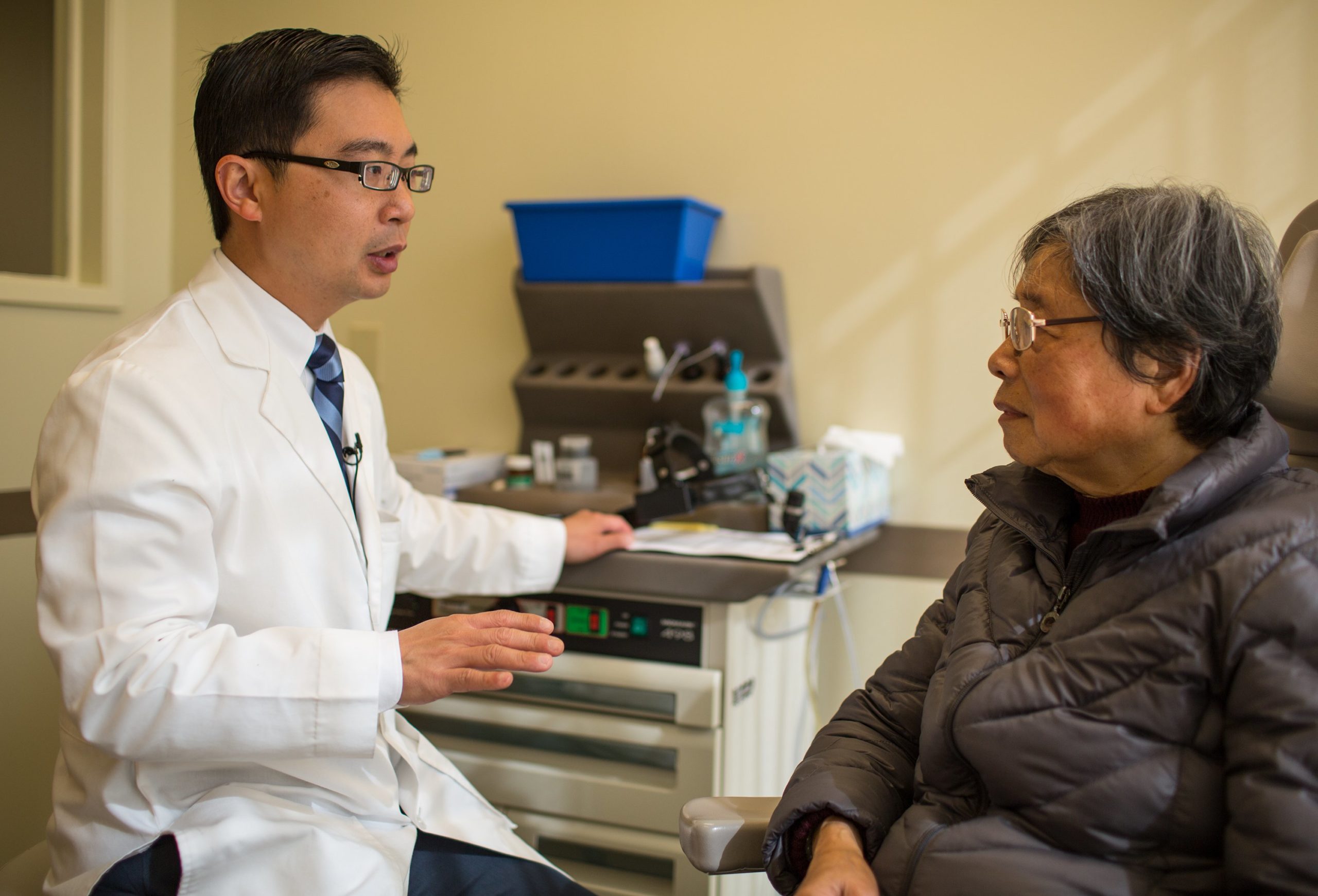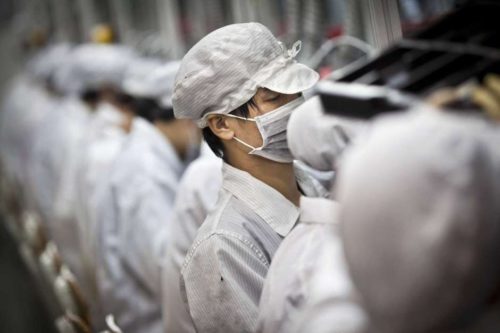How does healthcare in the U.S. compare with China’s?
Chinese visitors to the U.S. are often shocked by the exorbitant bills and long waits at healthcare facilities, but China has its own set of problems.

On Valentine’s Day in 2015, I spent a night at an emergency room at New York University’s Lutheran Medical Center in Brooklyn with a severe fever. I waited there for two hours before being called. I was given an X-ray, a blood test, and a urine test, then had another half hour of waiting. Finally, I saw a physician assistant and was told to go home because my case wasn’t serious. She prescribed some antibiotics, but I didn’t buy them because it would cost me about $200. On my way home, I bought a bottle of NyQuil for $15.
The next day, the fever was gone. My parents, who were visiting me from China at the time, couldn’t believe that a regular fever could result in all the procedures I was put through and how much everything cost: Two weeks after my hospital visit, I received a $2,000 bill because I didn’t have health insurance. In China, a similar consultation would have cost 200 yuan (about $35).
Still, many Chinese people believe that the U.S. offers the best healthcare system in the world, complete with high-skilled doctors, the most advanced medical equipment, and spacious hospitals. In comparison, the healthcare sector in China is underfunded and understaffed, and medical resources are unevenly distributed across different provinces.
So, in the end, which is better?
Three months versus two days
Hu Chongjun 胡崇骏, who moved to America five years ago, works as a computer engineer in Pittsburgh. He says that receiving treatment in the U.S. is less efficient. Last year, it took him three months to get a gastroscopy for his stomach; in China, he states, it would take less than two days.
“I don’t know why it took that long. But isn’t it normal to wait for testings in the U.S.? Doctors, anesthesia, and the clinic, they all needed time for preparation,” Hu says. “Luckily, I was fine and nothing was serious.”
Seeing a doctor may be speedy in China, but it can also be complicated. Unlike American patients who have to make an appointment, most patients in China can just walk into a hospital and pay for either a “special care” appointment ticket or a “regular care” appointment ticket, based on how much they are willing to pay. For mild afflictions such as the common cold, the average waiting time to get an appointment ticket is only a few minutes. For more complex treatments, the waiting time for a ticket can stretch as long as two weeks. Additionally, because high-quality medical resources are usually concentrated in China’s largest cities, patients with serious illnesses like cancer must transfer to hospitals in cities like Beijing, Shanghai, or Guangzhou to get treated. Wait lines can become insufferable.
To solve this overcapacity problem, in 2011, many hospitals in Beijing introduced a unified appointment registration platform, where patients can register online or via telephone. However, long lines of patients waiting overnight to register in popular hospitals such as the 301 Military Hospital in Beijing are still common.
In recent years, scalpers, known as “cows” (黄牛 huángniú) in Chinese, have made a business out of standing in line to get appointment tickets and then selling them at exorbitant prices to patients desperate to see a doctor. In 2016, a viral video (in Chinese) showing a woman with her sick mother raging against scalpers created a public outcry and brought calls for criminal sentences. Although authorities promised stronger enforcement, demand from patients to see high-quality doctors is so high that little has changed. In the video, the woman accuses the hospital of negligence. “The ‘special care’ appointment ticket is 300 yuan [$42], but the scalper is asking for 4,500 yuan [$642],” she says. “Why is it so difficult for an ordinary citizen to see a doctor nowadays? The hospital and the scalpers are in cahoots!”
There’s an app for that
Efforts to fight scalpers and ease the burden at overcrowded public hospitals range from promoting healthcare apps to increasing the number of private hospitals, says Snow Wang 王晓纯, a nutritionist at a private hospital in Beijing.
There are now more than 2,000 Chinese healthcare apps that offer patients medical advice, appointment booking, and other services. Good Doctor, backed by the insurance group Ping An, claims to have 20 million active monthly users who receive up to 400,000 diagnoses daily. WeDoctor, a service from Tencent, the company behind WeChat, focuses on referring patients to doctors and says that it has completed more than 100 million appointment bookings over the past two years, earning $175 million in revenue last year. However, according to the Financial Times, funding of these apps dropped 10 percent in the final quarter of 2016 to $520 million, as fewer people are actually paying for them, so there is some doubt about their future.
The reality, Wang explains, is that sometimes patients in China simply can’t see a doctor without the help of a scalper.

In 2016, the number of private hospitals increased to 16,000, up 6 percent from 2015, bringing the total number of hospitals to 29,000, according to recent data from the National Bureau of Statistics. Private hospitals have traditionally been viewed by many Chinese as having limited resources, less qualified doctors than public hospitals, and purely profit-seeking motives. But this is changing, both because wealthier Chinese now expect better service and less crowded conditions than at public hospitals, and because the standard of private care is going up rapidly.
“I think more and more people in Beijing are accepting private hospitals,” says Snow. “But at the same time, the government needs to strengthen the development of community health clinics. Patients don’t need to see a doctor in big hospitals if they just have a minor illness.”
During this year’s Two Sessions, the annual political gathering in Beijing that ended on March 16, Li Bin 李斌, director of the National Health and Family Planning Commission, addressed the necessity for comprehensive healthcare reform.
“In the winter of 2015, I visited a hospital without telling anyone. It was so cold outside, but inside the hospital it was warm because so many people were lining up for registration,” he said. “I thought to myself, ‘Overcrowding not only causes inconvenience for patients, it’s also not safe.’”
$20,000 to treat a cold: Welcome to America!
To ease the burden on public hospitals, the Chinese government has increased its funding of hospitals, rural clinics, and health insurance schemes. The country’s healthcare expenditure rose from 4 percent of GDP in 1995 to 6 percent in 2014, according to data from the World Health Organization’s Global Health Expenditure Database. But the percentage still falls far short of healthcare spending in the U.S., where it accounted for 17.5 percent of GDP in 2014, reaching a total of $3 trillion, according to the Centers for Disease Control and Prevention.
“When I first came to the U.S. in 2012, I remember having a terrible cold,” says Hu. “My eyes were going dark and I felt dizzy. I got scared because nobody could look after me at that time. So I called 911 and an ambulance drove me to a hospital in Brooklyn.”
Later, he received a $20,000 bill. Fortunately, Hu was covered by a student insurance plan at the time, but even so, he had to pay $2,000 out of pocket.
“It was still very expensive. I don’t understand why it would cost that much for an ambulance, one night’s observation, and a cold. Since then, I have been complaining about the healthcare system in the U.S. for two years. It was not worth $20,000.”
In the U.S., most insurance carriers are commercial and the private market can get so complex that it causes confusion. Hu says that he gets a basic medical plan from Blue Cross Blue Shield through his employer. But if he were asked to choose a plan by himself, he wouldn’t know which to choose. “I think it would be confusing to pick a plan by myself,” Hu says. “I hope there would be some resources available to tell us how much a plan costs per month, what it covers specifically in great details, tailored to different people’s needs.”

State-run health insurance in China
More than 97 percent of people in China use public health insurance systems, but the different plans affect the quality of the services they receive. In China, state-funded health insurance is divided into three main categories, based on where people live and their employment status:
Urban Employee Basic Medical Insurance (UEBMI) 城镇职工基本医疗保险 (职工医保)
This is the most generous public health insurance plan, and it is funded by employees, their employers, and local governments. Companies or government organizations contribute 6-12 percent of the employee’s salary to the fund, and the employee contributes 2 percent. This plan has the highest average premiums and the highest reimbursement rate.
Urban Resident Basic Medical Insurance (URBMI) 城镇居民基本医疗保险(居民医保)
This plan covers unemployed adults, children, students, and retirees. It is less generous because local governments alone are responsible for funding it.
New Cooperative Medical Service (NCMS) 新型农村合作医疗保险(新农合)
This program was rolled out in 2003 to expand coverage to rural residents. It is administered by the National Health and Family Planning Commission and is funded by the central government. It is the least generous plan, and at least one study has concluded that it neither “decreases out-of-pocket expenditure” for those covered nor increases “utilization of formal medical services” nor improves the health status of a significant number of rural residents. In 2016, plans were announced to merge NCMS with URBMI, but that has not yet happened.
None of the plans are perfect. According to an article (in Chinese) published last year by Dr. Eric Chong 庄一强, former deputy secretary-general of the Chinese Hospital Association and now research director of a hospital consultancy company, the UEBMI plan for urban workers may lead to hospitals rejecting patients with serious illnesses, while the URBMI plan may give an incentive to doctors to use cheap drugs and low-cost, low-quality treatments.
Private health insurance in China
While the majority of Chinese are under public health insurance, the market for private insurance grew dramatically from 1.5 trillion yuan ($21 billion) in 2014 to 2.4 trillion yuan ($34.8 billion) in 2015, and it could reach 5 trillion yuan ($72.5 billion) by 2020. As the country’s middle class expands and the population ages, public health services are falling short of the growing demand for medical care, resulting in “growing government support for private sector involvement in the full spectrum of the health and medical system from cradle to grave,” according to a report from Ernst & Young.
Currently, there are five private insurance companies that specialize in health insurance and another 100 offer health insurance products, including 28 foreign life insurance companies. The three largest private health insurers are Ping An Health Insurance Company 中国平安健康保险, PICC Health Insurance Company 中国人保控股公司, and China Life Insurance 中国人寿保险. Most private health insurance plans provide supplementary insurance products to complement public health insurance plans. Supplementary insurance and critical illness products are the most developed in the market, primarily because the public insurance systems cannot fully cover the costs of catastrophic illnesses.

Too many drugs
Overcharging and overprescribing doctors are a symptom of underfunded public hospitals, while their low salaries also raise the appeal of accepting kickbacks offered by pharmacology companies. In 2013, 48 percent of outpatient revenues and 39 percent of inpatient revenues at tertiary hospitals were from drug prescriptions, according to data from the National Health and Family Planning Commission.
To regulate the way that big hospitals charge for drugs and services, the Beijing city government introduced a set of new rules to take effect this spring — they will require more transparency from the capital’s 3,600 state-run medical institutions and prohibit unreasonable drug markups. The shortfall in revenues will be made up from new service fees ranging from 20 to 100 yuan ($2.90-$14.50) for all consultations, and higher fees on specialized treatments and surgery. The city government will probably also have to increase subsidies to hospitals.
Violence between patients and doctors
In China, the relationship between patients and doctors can turn violent when families of patients feel that they have been mistreated or neglected. According to a report released by Xinhua News Agency, in 2014, there were 4,599 “security incidents” recorded in hospitals, many of which were assaults or protests by aggrieved families of former or current patients. That year, 1,425 people were arrested for such offenses. The altercations have become so common that they have inspired a new slang word in Mandarin Chinese, yinao (医闹 yī nào), which roughly translates as “medical ruckus.”
“The amount of time that a doctor can give you is just two to three minutes in those big public hospitals,” says Snow Wang. “I think that might contribute to the reason why patients can get angry, especially considering that they may have spent half of the day waiting to get a registration ticket.”
During this year’s Two Sessions, Xinhua News Agency released an animated music video with a rap song about the “six things close to Xi Jinping’s heart,” all of which are issues sensitive to the Chinese public. One of them, unsurprisingly, is the need to create an effective and affordable healthcare system.
But despite its problems, basic healthcare in China is affordable when compared with the options in the U.S. Every time I travel back to China, the first thing on my to-do list is to get a physical checkup: For most of the time that I’ve lived in America, I have not had health insurance, and visiting the doctor for minor ailments is prohibitively expensive. If you have the money, healthcare in the U.S. is truly excellent, but if you’re not loaded, you’re better off in China.





